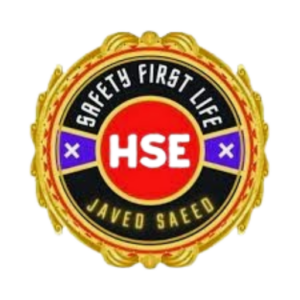Essential Safety Trainings in Construction, Oil & Gas Industries, and for Safety Officer Interviews
🔽 Click here to download the PDF
Introduction
Ensuring occupational health and safety in high-risk industries like construction and oil & gas requires a well-trained workforce and competent safety professionals. Safety trainings are not only mandatory under national and international standards (like OSHA, NEBOSH, ISO, and ADNOC/ARIC in the UAE), but they also form the backbone of a proactive and compliant safety culture.
Below is a detailed guide outlining essential training needs across three categories:first construction sites, oil & gas operations, and general training knowledge expected of a safety officer candidate during interviews.
Part 1: Safety Trainings Required on a Construction Site
· HSE Induction (Project-Specific)
· Manual Handling
· Scaffold Safety
· Ladder Safety
· Excavation and Trenching Safety
· Confined Space Entry Awareness
· Working at Height Safety
· Lockout/Tagout (LOTO)
· Electrical Safety (Low/High Voltage)
· Lifting Operations & Rigging Safety
· Permit to Work (PTW) System Awareness
· Fire Safety and Fire Warden Training
· Hot Work Safety
· First Aid and CPR
· Personal Protective Equipment (PPE) Usage
· Housekeeping & Waste Management
· Hazard Identification and Risk Assessment (HIRA)
· Slips, Trips, and Falls Prevention
· Machine and Equipment Safety
· Heat Stress Awareness (especially in Middle East regions)
· Chemical Handling (for paints, adhesives, sealants)
· Emergency Response & Evacuation Drills
· Traffic Management and Plant Movement Safety
· Toolbox Talk and Pre-task Briefing Training
· Behaviour-Based Safety (BBS) Awareness
Part 2: Safety Trainings Required in the Oil & Gas Industry
· Basic Offshore Safety Induction and Emergency Training (BOSIET)
· H2S Awareness and Escape Training
· Confined Space Entry (Advanced)
· Permit to Work (PTW) – Oil& Gas Specific
· Process Safety Management (PSM)
· Control of Major Accident Hazards (COMAH)
· Firefighting – Basic & Advanced (Hydrocarbon Fire Training)
· Hazardous Area Classification (ATEX Zones)
· Electrical Equipment in Hazardous Areas (EEHA)
· Lockout/Tagout (Advanced)
· Pipeline Safety and Isolation Procedures
· Dropped Object Prevention Scheme (DROPS)
· Behavior-Based Safety (Oil & Gas Focused)
· Job Safety Analysis (JSA)
· Emergency Response Planning (ERP)
· Gas Testing and Atmospheric Monitoring
· Working at Height using SRLs & Fall Arrest Systems
· Tank Entry & Inert Atmosphere Safety
· SIMOPS (Simultaneous Operations) Training
· Well Control Safety (for drilling operations)
· Environmental Protection & Spill Response
· Defensive Driving (for remote/offshore locations)
· Safe Use of Breathing Apparatus (SCBA)
· Isolation and Flange Management
· Root Cause Analysis (RCA) for incident investigations
Part 3: General Training & Knowledge to Pass a Safety Officer Job Interview
Core Competencies to Know:
· Understanding of OSHA / NEBOSH / ISO 45001 standards
· Hazard Identification and Risk Assessment (HIRA)
· Permit-to-Work Systems (PTW)
· Incident/Accident Reporting and Investigation
· Emergency Preparedness and Response
· Toolbox Talk Delivery
· Safety Audit and Inspection
· Knowledge of Safe Systems of Work (SSOW)
· Communication Skills
· Behavior-Based Safety (BBS)
· Documentation and Reporting
· PPE Management
· Training Coordination
· Legal and Regulatory Awareness
Final Advice for Interview Preparation:
· Revise NEBOSH/OSHA or equivalent course materials
· Familiarize yourself with project-specific safety requirements
· Be ready to answer scenario-based questions
· Demonstrate your initiative and problem-solving mindset
· Show understanding of both proactive and reactive safety actions
🔽 Click here to download the PDF
Conclusion
Whether in construction, oil and gas, or pursuing a safety officer career, because training plays a central role in building a competent, compliant, and resilient safety culture. By ensuring all workers are trained for the specific risks they face—and safety officers are prepared to lead—in addition you strengthen your organization’s ability to protect lives and assets.

